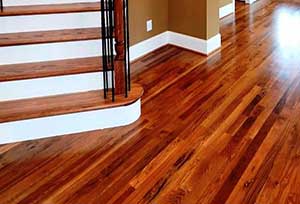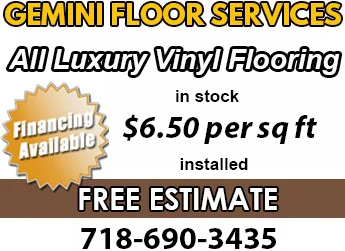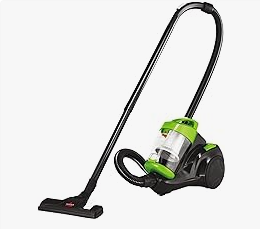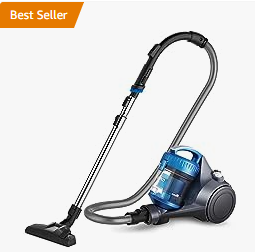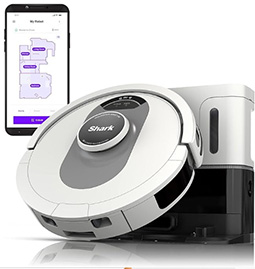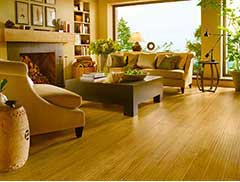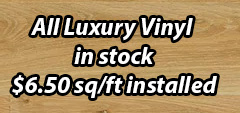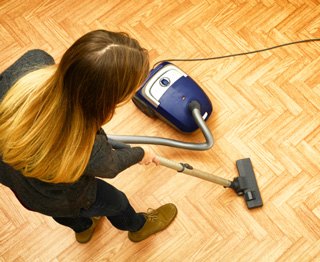 Maintaining your hardwood floors’ elegance and charm requires proper maintenance. Accumulation of dirt & debris can scratch and scuff the surface dulling it’s luster. With the array of cleaning tools available, one question often arises: Are vacuums suitable for hardwood floors? Let’s delve into the nuances, including the types of vacuums ideal for wood floors and the dos and dont’s to ensure your floors’ longevity. The same will apply to laminate floors as well.
Maintaining your hardwood floors’ elegance and charm requires proper maintenance. Accumulation of dirt & debris can scratch and scuff the surface dulling it’s luster. With the array of cleaning tools available, one question often arises: Are vacuums suitable for hardwood floors? Let’s delve into the nuances, including the types of vacuums ideal for wood floors and the dos and dont’s to ensure your floors’ longevity. The same will apply to laminate floors as well.
Should You Vacuum Hardwood Floors?
The short answer? Yes, but with caution. Using a vacuum on hardwood floors is generally safe, provided you select the right vacuum and use it correctly. The primary concern is protecting the floor’s finish and preventing scratches from abrasive brushes or wheels. With the proper vacuum your floor maintenance can be a good deal easier. On the other hand, using a vacuum which is more designed for carpets could damage your floor. Many popular upright vacuums are like this.
What also can damage wood or laminate is a steam cleaner or wet mopping. While a damp mop is alright, you just never want to saturate wood or laminate with steam or water which can cause warping
Choosing the Right Vacuum
Consider a Canister Vacuum or stick vacuum, they are more often designed for hardwood floors.
Canister vacuums with adjustable suction and soft-bristled brush attachments are hardwood floor-friendly. Their versatility allows for seamless transitions between surfaces and gentle cleaning, preventing scratches.
A canister vacuum is a type of vacuum cleaner that consists of a separate unit or canister that holds the motor and dust collection system, connected to the cleaning head by a flexible hose. This design allows for greater maneuverability and versatility compared to traditional upright vacuums.
The Bissel Zing Canister Vacuum shown here is one of the top selling canister vacuums with over 40k reviews.
Here are some key features of canister vacuums:
Separate Canister: The canister contains the vacuum’s motor, filter, and dust collection system. It’s typically mounted on wheels for easy movement around the cleaning area.
Flexible Hose: The hose connects the cleaning head or attachments to the canister. This flexibility enables users to reach under furniture, into corners, and clean various surfaces more easily.
Versatility: Canister vacuums often come with a variety of attachments and accessories, such as crevice tools, upholstery brushes, and different floor nozzles, making them suitable for cleaning multiple surfaces like hardwood floors, carpets, upholstery, and curtains.
Maneuverability: Their design allows for better maneuverability, especially in tight spaces and around obstacles, compared to bulkier upright vacuums. It’s lighter and easier to pickup and move around, carry up & down stairs, etc.
Suction Power and Filtration: Many canister vacuums offer adjustable suction power, allowing users to customize the cleaning intensity. They also often have efficient filtration systems to trap dust and allergens.
The Eureka WhirlWind shown above here is another top seller with over 30k reviews.
Canister vacuums are particularly well-suited for hardwood floors because they often come with attachments that have soft bristles or padding, reducing the risk of scratching or damaging the delicate wood surface. Additionally, their adjustable suction power can be beneficial for cleaning different types of debris on hardwood floors without causing damage.
When choosing a canister vacuum for hardwood floors, look for models with adjustable suction settings, soft-bristled attachments, and rubber or felt wheels (not plastic or hard wheels) to ensure gentle yet effective cleaning without compromising the floor’s finish.
Stick Vacuums
There are many cordless stick vacuums these days which are also well suited for wood floors.
Stick vacuums are another type of vacuum cleaner that has gained popularity for their lightweight and compact design. They consist of a slender, stick-like body with a motor, dustbin, and battery (in cordless models) housed within the handle or main body.
Stick vacuums can be suitable for hardwood floors, especially when they offer adjustable settings and specialized attachments designed for these surfaces. Their convenience, lightweight design, and maneuverability make them a popular choice for quick cleanups and regular maintenance of hardwood floors.
Just ensure that the specific model you choose is equipped with features that are gentle and safe for your wood flooring. Look for models with specialized brush rolls or attachments specifically designed for hardwood floors. Soft bristles or microfiber pads are preferable to prevent scratching or damaging the wood.
Some stick vacuums have rotating brush bars, similar to upright vacuums. Ensure these can be switched off or have settings suitable for hardwood floors to prevent potential scratches. Opt for stick vacuums with adjustable suction power. Lower suction settings can be gentler on hardwood floors while still effectively picking up dirt and debris.
The Bissell Featherweight Stick is one of the most popular vacuums out there with over 100k reviews.
Advantages of Stick Vacuums for Hardwood Floors:
Maneuverability: lightweight, easy to maneuver, ideal for quick cleanups and reaching tight spaces around furniture on hardwood floors. Cordless stick vacuums offer freedom of movement without being tethered to an outlet. This makes them especially convenient for quick cleanups or reaching areas without accessible power sources.
Compactness: Their slim profile allows for easy storage and convenient access, making them a practical choice for small living spaces.
Versatility: Many stick vacuums come with multiple attachments and brush heads suitable for various surfaces. Some models have specific attachments designed for hardwood floors, often with soft brush rolls or pads to prevent scratching.
Whether you choose a canister or stick vaccum, consider this:
• Look for vacuums equipped with settings specifically designed for hardwood floors. These often feature softer brushes and lower suction options, safeguarding the floor’s surface.
• Avoid Vacuums with Beater Bars. Beater bars, typical in many upright vacuums, can potentially cause damage to hardwood floors. Opt for models without these bars or those with an option to turn them off.
Robot Vacuums
As for robot vacuums they are overall safe to use and work well for hardwood floors by gently & consistently removing dirt & debris. Still it is recommended to go with well established brands and not go for less known brands that are much cheaper. A robot vacuum can reduce how often you need to vaccum manually but not eliminate it altogether.
The Shark robot vacuum with AI & voice control shown here is a top seller with 30k reviews.
Best Practices for Vacuuming Hardwood Floors
Regular Maintenance: Sweep or dust regularly to remove loose dirt and debris before vacuuming hardwood floors. This minimizes the risk of scratching the surface. The general recommendation is two times weekly where there’s high traffic and once where there’s low traffic.
Adjustable Suction Power: Utilize the vacuum’s adjustable suction settings. Lower suction is often more suitable for wood floors as it prevents the vacuum from forcefully pulling at the delicate finish.
Soft-Bristled Brush Attachments: Attach soft-bristled brush accessories for vacuuming hardwood floors. These brushes are gentle on hardwood floors while effectively capturing dirt and dust.
Avoid Excessive Water or Steam: Refrain from using steam cleaners or excessive moisture on hardwood floors as it can cause warping or damage to the wood. Address spills immediately. Excessive moisture can seep into the wood, causing irreparable damage or staining.
Common Mistakes to Avoid
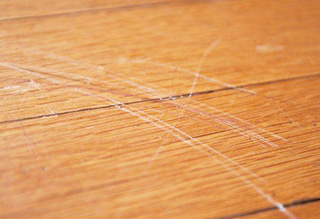 Skipping Regular Maintenance: Neglecting routine cleaning can result in scratches from accumulated dirt and debris. Regular sweeping or dusting is crucial.
Skipping Regular Maintenance: Neglecting routine cleaning can result in scratches from accumulated dirt and debris. Regular sweeping or dusting is crucial.
Using the Wrong Attachments: Using abrasive or inappropriate attachments can scratch or damage the wood. Always opt for soft-bristled brushes or floor-specific attachments.
Ignoring Vacuum Maintenance: Maintain your vacuum regularly. A dirty or poorly maintained vacuum can expel dirt onto your floors or cause damage due to malfunctioning parts.
Conclusion
Vacuuming hardwood floors can be safe and effective if done correctly. Choosing the right vacuum and adopting proper techniques are paramount to preserving the floor’s beauty and longevity. Remember, regular maintenance, gentle cleaning tools, and mindful practices are key to keeping your hardwood floors pristine.
In essence, vacuums can indeed be your hardwood floor’s best friend, but only if you choose wisely and treat them with care.
